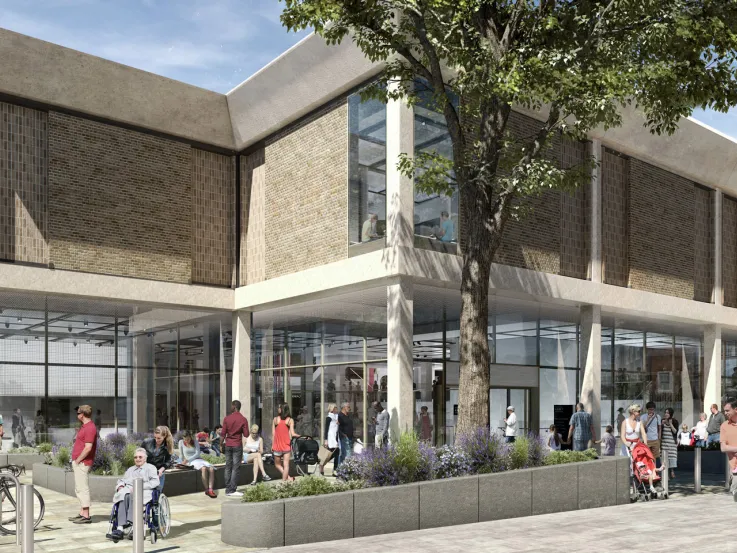Surrey Soldier died at Battle of Arras 100 years ago
Today, 11 April 2017, the National Army Museum is publishing the photographs and correspondence of Second Lieutenant Douglas McKie, exactly a hundred years after his death.
Born in Bayswater, McKie and his family grew up in Clapham and Kingston-upon-Thames. His photographs give us an insight into his childhood, including the family mourning the death of Queen Victoria and the children patriotically waving a union flag on top of a rocking horse.
In April 1914 McKie moved to Brazil, working for the London and Brazilian Bank. When the war in Europe broke out he wrote to his sisters asking for information about events and noted that many expatriates in Brazil had returned home, although he felt the conflict would be a short one. However, as the war continued McKie applied for leave to return home and enrolled in the army in July 1915.
On return to England he joined the Artists Rifles only to injure himself doing a cross-country run in training. Writing to his sister he said ‘What did you do in the War daddy? – jumped over a fence! Seems rather ridiculous doesn’t it?’ Once discharged from hospital McKie joined the Northumberland Fusilers as a Second Lieutenant in May 1916 and was posted to France ten months later.
1916 had been a costly year for the Allies on the Western Front, including the huge losses on the Somme. The winter of 1916-17 was also bitterly cold, giving the German Army time to review their plans even though they had emerged from 1916 in less-than-great shape. France and Britain could not afford another disaster and a breakthrough became imperative.
From 20 March 1917 their artillery began to pound the front at Arras. The British were aware that they could not wipe out all the Germans with shells but the huge extended bombardment exhausted and demoralised the enemy troops.
McKie was also demoralised, writing to his sister, ‘well my one wish is to be back with a “Blighty” next week’ and describing the close proximity of the guns to the troops:
‘I have had my first baptism of fire, a six inch landed a few hundred yards from us yesterday. Our own guns are creating a tremendous row, but placed just beside our billet is rapidly shaking our slate off the roof. My hair oil jumped about a foot from the table when it was firing this morning.’
The Battle of Arras commenced on 9 April at 05:25 with a hurricane of bombardments after a night of silence from the guns to confuse the enemy. Weather proved to be an unlikely ally as heavy snowfall blew towards the German troops.
The attack originally made good progress but McKie was less fortunate. On 11 April he was wounded in action by shellfire. McKie died by the time he reached a front line aid post. On 20 April his family received a letter from his commander:
‘I am most distressed to have to write to you about the death of your gallant son. Though he was with us for so short a time he succeeded by his courage and splendid example during the attack in gaining the confidence of his men and the admiration of the Officers over him.’
Notes for editors
For more information, please contact the National Army Museum press office at pr@nam.ac.uk or 020 7881 2433.
Second Lieutenant Douglas McKie
Douglas Hamlin McKie was born in Bayswater in 1893. His family initially lived on Thornton Road, Clapham before moving to Kingston-Upon-Tames in Surrey. McKie attended Streatham High School and later Tiffin Boys’ School.
In 1908 he took a job at British Law Fire Insurance and two years later became a junior clerk at London County and Westminster Bank before being given a job as a clerk working for London and Brazilian Bank in Santos. He departed from Southampton to Brazil on 10 April 1914, enjoying a rich life in Santos, living with a German family and falling in love with a Brazilian girl, Leah Hime.
On 28 August 1916 McKie arrived back in the United Kingdom joining the Artists Rifles as a private. In May 1916 he became a second lieutenant in the Northumberland Fusiliers based in Newcastle. McKie was finally posted to France in March 1917 arriving just before the British went on the offensive at Arras in April. He died on 11 April 1917 and was buried at the Commonwealth War Graves military cemetery in Roclincourt, near Arras. Mckie’s sister meticulously collected his letters, photographs and documents of his service after his death.
National Army Museum
The National Army Museum is the leading authority on the history of the British Army. Founded in 1960 by Royal Charter and established for the purpose of collecting, preserving and exhibiting objects and records relating to the Land Forces of the British Crown it is a museum that moves, inspires, challenges, educates and entertains.
The Museum tells the story of the British Army, the personal experiences of the soldiers who have served and connects the British public and its Army demonstrating how the role of the Army and its actions are still relevant today.
Heritage Lottery Fund
Using money raised through the National Lottery, the Heritage Lottery Fund (HLF) aims to make a lasting difference for heritage, people and communities across the UK and help build a resilient heritage economy. HLF has supported 36,000 projects with £6bn across the UK.
For more information, please contact Katie Owen, HLF press office, on tel: (020) 7591 6036 out of hours mobile: 07973 613820.


